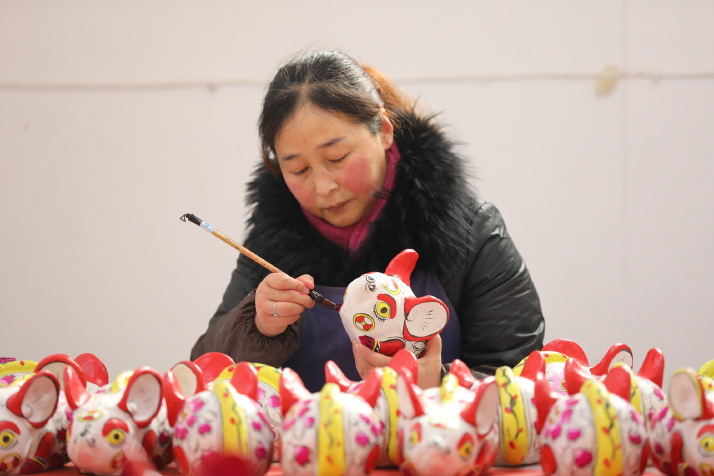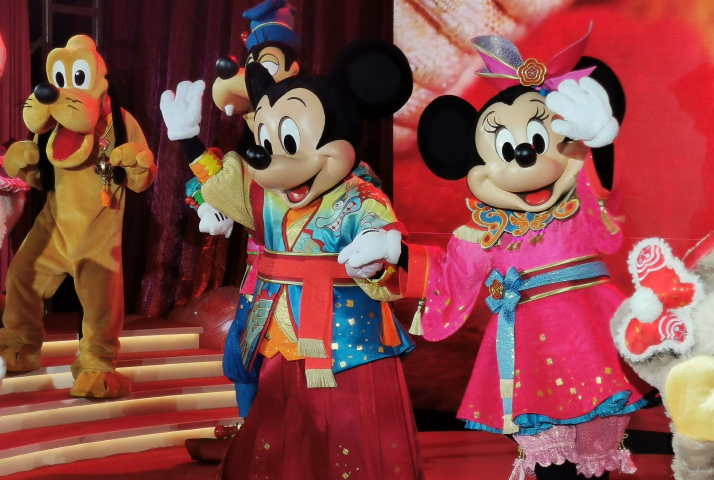| Lifestyle |
| A Twist in the Tail | |
| The Year of the Rat brings creativity and hope | |
|
|
 Veteran painter Han Meilin (right) attends the launch ceremony of the Year of the Rat stamps that he designed in Beijing on January 5 (XINHUA)
For Han Meilin, the Chinese New Year of the Rat, which starts on January 25 according to the Chinese lunar calendar, has a stupendous wealth of associations. The 83-year-old artist, known for his animal paintings, was himself born in the Year of the Rat. In 1996, another Year of the Rat, when Atlanta in the United States held the 26th Olympic Games, he had the honor of creating the Five-Dragon Clock Tower, a 10-meter-high sculpture in the city's Centennial Olympic Park. In 2008, the last Year of the Rat, when China hosted its first Olympic Games in Beijing, he was the chief designer of the Games mascots. In the English-speaking world, the word rat generally conjures up negativity, associated with cunning, deceit and betrayal. But since the Chinese New Year began to be celebrated worldwide and created awareness about the richness of other cultures, chunjie or the Spring Festival, as the Chinese New Year is popularly known, has become a cultural landmark heralding a new start and a platform for creativity. Han's creativity continues in the New Year of the Rat with China Post selecting him to design its two special stamps to mark the New Year. The first shows a leaping rat, a reference to a Chinese folk tale in which the rat bit the sky to create an opening so that sunshine could come to Earth. "The jumping rat symbolizes the wish for a better life in the new year," Han explained on his website. In the second stamp, a rat family of father, mom and baby sit by a small pile of peanuts, looking into the distance expectantly. That image represents the wish for a bountiful harvest and a happy family life in the new year. Stamp connoisseurs' interest in the Year of the Rat goes beyond borders. For example, on Guernsey, the British island in the English Channel, the postal authorities commissioned Sydney-based artist Chrissy Lau to design Year of the Rat stamps, the seventh set in its Chinese New Year series.  A lantern show for the Year of the Rat in Sanmenxia, Henan Province in central China, on January 9, ahead of the Chinese New Year, which falls on January 25 (XINHUA)
Special Chinese New Year calendars have become collectors' items and a tradition. The Palace Museum Calendar, first published from 1933 to 1937, is more than a calendar. Coming in the size of a pocket book, it is a mini encyclopedia of Chinese culture, with half of the pages carrying images of historical places and priceless artifacts. "While protecting cultural heritage, the museum aims to integrate traditional culture into everyday life," Wang Xudong, Curator of the Palace Museum, said at the launch ceremony of the 2020 calendar in August 2019. The Palace Museum, also known as the Forbidden City, was the royal residence of the Ming (1368-1644) and Qing (1644-1911) dynasties. This year is the 600th anniversary of the Forbidden City.  A folk artist makes clay rats in a village in Shaanxi Province in northwest China on January 7 (XINHUA)
The interconnectivity of culture can be seen from U.S. financial services company Wells Fargo bringing out a Year of the Rat calendar for its customers, while in Yekaterinburg, Russia, the Glavny Prospekt International Arts Center held an Oriental Calendar prints exhibition to showcase East Asian zodiac culture. It's a brisk time for businesses as well. U.S. cosmetics maker Clinique has launched its Year of the Rat highlighter where the powder cakes look like the face of a rat. DHL is energetically promoting on Twitter its handbook How to Reach Chinese Millennials, a 400-million group of well-heeled consumers who are difficult to ignore by any business wishing to see profits rise. Even Walt Disney World, whose patron saints include Mickey Mouse, a first cousin to the rat, and Jerry of the Tom and Jerry duo, is drumming up business with traditional Chinese celebrations like the dragon dance.  Cartoon characters Mickey and Minnie at a Shanghai Disney Resort Spring Festival event on January 9 (XINHUA)
However, the Year of the Rat means much more for the Chinese. There is a special dimension to the year 2020, which is the deadline for China's poverty alleviation campaign. All residents living below the national poverty line—a per-capita annual income of 2,300 yuan at 2010 constant prices ($340 at the 2010 exchange rate)—are expected to rise out of poverty by the end of the year. While over 800 million people have been rescued from poverty since the founding of the People's Republic of China in 1949, which UN Secretary General Antonio Guterres called "the greatest poverty reduction feat in history," around 6 million people still live in poverty. Helping them live a better life is essential to building a moderately prosperous society in all respects. Copyedited by Sudeshna Sarkar Comments to jijing@bjreview.com |
|
||||||||||||||||||||||||||||
|
